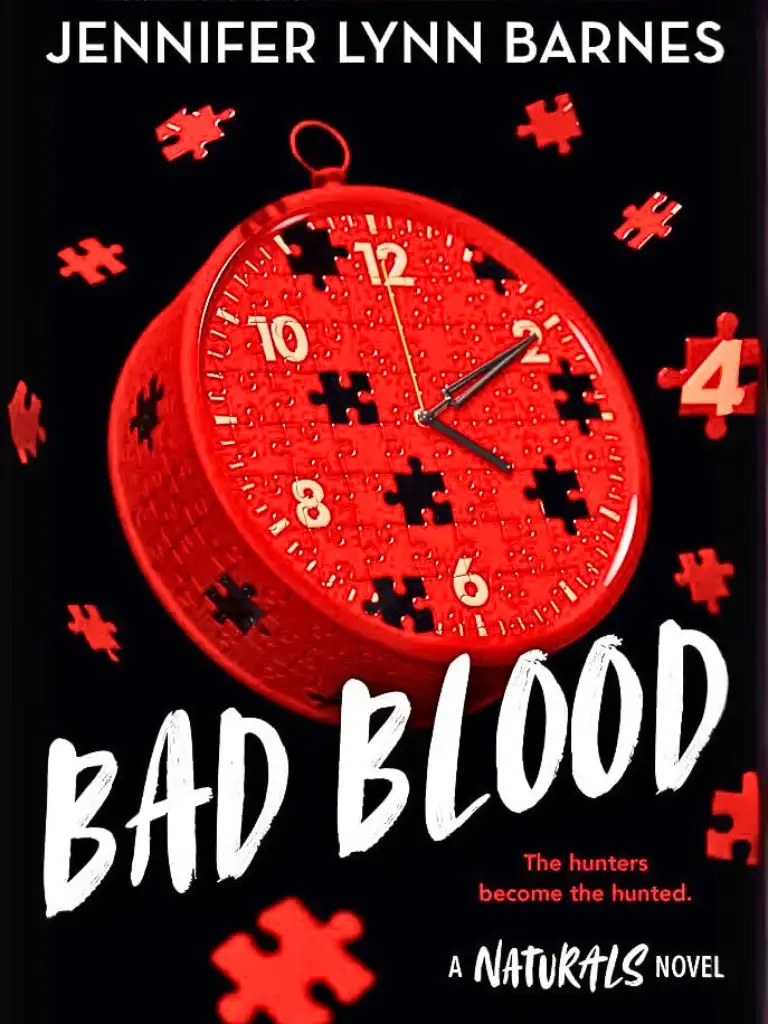THE SCALE of the Kennedy Space Center is beyond my expectations. The complex has over seven hundred buildings spread across almost a hundred and fifty thousand acres. It’s like a city of the future, an oasis of technological marvels here on the Florida coast. The campus is swarming with people: military, NASA personnel, private contractors, you name it. This launch is an all-hands-on-deck event, and everyone is hustling to make it happen.
Fowler hands me off to a group of handlers who give me a crash course on what to expect up there. A different group runs a series of tests on me in rapid succession—everything from blood work to a vision check to urine tests. The results must be okay, because I never hear any more about it.
Lunch is a surprise, because the entire twelve-person mission crew is there. We gather in what feels like a college classroom: there are seven rows of desks arranged in a semicircle, rising up like stadium seating around a pit with a lectern and a large screen. A few of the crew know each other. They shake hands and make small talk.
I only recognize one of my crewmates: Dr. Richard Chandler. He’s twenty years older than I am. We met at Stanford, when I was getting my doctorate in bioengineering. He was a professor. A really good one. I excelled in his classes. And he liked me… for a time. I can’t put my finger on exactly when he stopped liking me. At the time, I didn’t understand why. We lost contact. But when I had my trouble—legal trouble—and when it hit the news, he was the first to denounce me. That got him on TV and raised his profile, which led to a book deal. Tearing me down became part of his identity.
I know why now: he was the leading bioengineering expert before I came along. At first, he saw a promising student, perhaps a collaborator. Then he saw a rival whose ideas and skill quickly surpassed his own. He stopped supporting me then—and went a step further. He committed to taking me down to reclaim his own glory.
I think that says a lot about a person: how they handle being second best. Do they work on themselves? Or attack the person ahead of them?
One thing’s certain: time hasn’t changed Chandler’s opinion of me. He stares daggers at me from across the room. He’s lost a little hair, and the crow’s-feet radiating from his eyes have gotten longer and deeper, but he’s the same Rich Chandler I truly came to know… after the world turned against me.
“Hi.”
I turn to find an Asian man holding out his hand. I’d guess he’s a little younger than I am, early thirties, and fit, with calm, intense green eyes.
“Hi. I’m James Sinclair.”
He nods and does a double-take. The reaction is ever so slight, a person recognizing a name they’ve read before, or heard before. His voice is less enthusiastic when he continues.
“I’m Min Zhao. Pilot. Navigation and extensive experience in ship repair. Two tours on ISS. Forty-four EVAs.”
“Impressive. Very nice to meet you.”
He doesn’t ask my field. So he does recognize me.
Another man wedges between us and holds his hand out to me, then Min. “Grigory Sokolov. Astronautics and electrical engineer. Propulsion and solar power specialist.”
He focuses on me, silently prompting me.
“James Sinclair. Medical doctor. Bioengineer.” He squints. “Robotics?”
“Among other things. I’ll be investigating the artifact.” “Figuring out how to kill it?”
“If need be.”
“There is need. There is no if.”
Min introduces himself to Grigory, this time with a little more detail. I can’t help but pick up on the other intros taking place all around us. The fields are varied. Most members have training in two fields, usually in adjacent disciplines. There’s a computer scientist with expertise in
computer engineering and hardware design. I’ll likely be working with him. A linguistics expert with a degree in archeology. Another physician with a specialty in brain trauma and psychology.
There’s clear redundancy in five roles: two pilots, two aeronautics engineers, two physicians, two computer scientists, and two roboticists. But the last crewmembers of each ship seem quite different from each other, in appearance at least. The archaeologist with a linguistics background is an Australian named Charlotte Lewis. I bet she’ll be on the Pax. Her counterpart has yet to identify himself. He’s hung back, near Chandler, watching the group with steely eyes. His face is lean, muscular, and sun-damaged. It’s hard to tell how old he is; his hair is close-cropped and graying at the temples. He’s wearing a navy suit that doesn’t fit well, as if it were given to him for this occasion. My guess is he’s military.
The Asian physician-psychologist approaches him and introduces herself, her English nearly flawless.
“Hello, I’m Izumi Tanaka.”
“Dan Hampstead. Nice to meet you, ma’am.” His accent is Southern. Texas is my guess.
“I’m a physician with a specialty in brain injury and other acute trauma. I also have a PhD in psychology. My work focuses on small group dynamics, especially high-stress situations and PTSD.”
Hampstead nods and looks away. “Good. Might come in handy on this trip.”
“And your field?”
“I’m with the United States Air Force.”
The other conversations are dwindling. Everyone is eavesdropping on this one, wondering who the standoffish twelfth crewmember is.
“You’ll be helping with helm and navigation?”
“I’ll be doing whatever needs to be done, ma’am.”
The words hang in the air, a sort of impromptu declaration.
Dr. Tanaka doesn’t miss a beat. “So will we all. Very nice to meet you, Mr. Hampstead.”
It’s clear Hampstead will be on the Fornax. He’s the pointy end of the stick.
I wonder which ship I’ll be on. I hope it’s the Pax. It will be in the lead
—the ship that makes first contact. That’s my guess. It will be more
dangerous there, but it’s where I want to be. I can put my skills to the best use on the Pax. I can make the biggest difference there.
Fowler enters the room, accompanied by a cadre of mission personnel and assistants who crowd around two long tables in the pit. Lunch is passed out. For me, a Waldorf salad. It’s the best thing I’ve eaten in years. It’s all I can do to remember my manners and eat slowly.
Binders arrive next. The title page reads: FIRST CONTACT – MISSION BRIEFING – CONFIDENTIAL, and below that, “James Sinclair, MD, PhD.” I throw the binder open and scan the pages as I chew my food. Full crew bios are first. Everyone has a doctorate, with two exceptions.
Lina Vogel, the computer scientist on the Pax, has little formal education, but she has two dozen patents and has created a software program I recognize, one that went viral a few years ago. I count that as a good sign. Whoever put this crew together picked people with the skills to pull off the mission—not just people with impressive pedigrees who would play well with a committee or on the news.
The other non-doctorate is Dan Hampstead. He’s a major in the US Air Force. Twenty years’ service. Six hundred combat hours spread over a hundred and eight combat missions. It doesn’t list his number of kills, only his medals: four Distinguished Flying Crosses with Valor, eight Air Medals with Valor, five Meritorious Service medals, two Purple Hearts. He grew up in a suburb of El Paso, and graduated from Texas A&M and the USAF’s Fighter Weapons School. He’s unmarried. No kids. Same for all the rest of the crew.
I hold my breath as I check the manifests. I’m pleased to find I’m on the Pax. I glance up. Chandler is staring at me from across the semicircle. He’s on the Fornax, and he’s definitely not pleased about it.
I scan the rest of the binder. There are schematics for every module of the ships. They were made at different times by different agencies and subcontractors. Some were clearly finished months ago, maybe even a year ago. Fowler told me they have been working on the plan for some time, but one thing’s clear: they’ve rushed to finish it. Some of the pages are out of order. A few sections of the binder are even blank.
Like the crew, the modules of the ships are a mish-mash from around the world, all with different specialties, thrown together in a desperate hope of saving humanity. And like the crew, they’re the best we have to send up there right now.
When I saw Fowler’s initial presentation, I had a lot of questions. I asked some of the major ones at the time, but there are still smaller questions, issues that could doom this mission. The binder has answers to a few of those questions, but not all of them. Maybe they’ll be addressed in the Q&A. And maybe there are no answers to some questions.
Still, I’ll learn as much as I can. This is humanity’s last roll of the dice, and I’m going to make sure we maximize the odds.
In the pit, Fowler activates the screen, which reads, OPERATION FIRST CONTACT.
“Hello, and welcome to the Kennedy Space Center. I’m Lawrence Fowler, director of NASA. First, be aware that this will be the last time all of you are together before launch. We have a lot to talk about, and plan for, in a short amount of time. In a few hours, most of you will be flown on ultra high-speed jets to your launch sites around the world—Russia, Guiana, Japan, and China. The four American crewmembers—Doctors Chandler and Sinclair, Mr. Watts, and Major Hampstead—will remain here.
“Within sixteen hours, we’ll begin launching the components of the Pax and Fornax. The first modules will be unmanned. They’ll contain food and some redundant equipment. We want to see how the entity reacts to the launches. Based on what we see, we may adjust our plan.
“I’m not going to go through the entire mission at this briefing. You all know the plan. And the risks. We’re going to talk about the unknowns, and plan for as many as we can.”
Fowler clicks a key, and the screen shows the same simulation he showed me back at Edgefield: the ships assembling while Earth floats away, then traveling to the alien artifact.
“Since the probe identified the artifact, ground-based telescopes have been monitoring it. It’s currently about midway between the orbits of Venus and Earth, roughly twenty million miles from Earth, or one and a half light-minutes away from Earth.”
Fowler moves to the next animation, which shows the two ships rendezvousing with the artifact.
“Okay. Our best guess is that it will take roughly four months to reach the artifact, which we’re calling Alpha. Once you get there…”
He just skipped over several of my questions. I raise my hand. I feel like a kid on the first day of class, but I have to ask.
“Dr. Sinclair?”
“Just curious. Is the artifact—Alpha—moving?” “Yes.”
“Vector?”
“We only have twenty-four hours of data, but it looks as though it’s moving toward the Sun.”
“Is the object’s velocity increasing?”
Fowler nods slowly. “Slightly. But again, we don’t have much data.”
“Point taken. But let’s say for a moment you extrapolated that data. Where does the probe’s route take it? Does it rendezvous with Venus? Mercury?”
“No. Our estimates have it reaching the Sun, though we don’t know when.”
You could hear a pin drop in the room. Min eyes me. I think he’s figured out where I’m going with this.
“Because you don’t know its velocity. Not enough data.”
“Correct,” Fowler says. His eyes tell me that he knows where I’m going with this too. But he stands by the lectern and lets me finish my thesis.
“The rendezvous point in the mission briefing is based upon roughly twenty-four hours of observational data about the artifact’s velocity. My question is: what if we’re wrong? We could miss it by seven million miles.”
Grigory shakes his head. “The ship has thrusters. We can make course corrections en route.” He points to the binder. “And we have telescopes to monitor the artifact.”
Min, who is sitting between Grigory and me, holds his hands out. “Yes, but the ship’s telescopes aren’t as powerful as the ones here on the ground. The fact is, you’re both right. We can make course corrections—but what Sinclair is saying is that they won’t matter if we’ve misjudged Alpha’s acceleration ability.”
I nod.
Grigory considers this. “You believe it is solar-powered.”
“I think it’s a safe assumption. And if so, it stands to reason that its acceleration will increase as it gets closer to the Sun. Though without more data, it’s impossible to establish a model to predict that. And it could also have an alternative propulsion system that it could engage at any point.”
Chandler is like a rumbling volcano finally exploding. “Well it’s all moot anyway. You’re raising issues we can’t solve. We can’t decrease solar
output—if that even is its fuel, which is pure speculation, I might add—and we can’t appreciably increase our own acceleration capability.”
“Of course we can.” Grigory seems almost insulted. “Do tell, Dr. Sokolov.”
“Larger engine, more fuel equals more acceleration.”
“Will it delay the launch?” Chandler snaps. “Can you increase our speed tenfold? Twenty?”
“I could triple it, easily.”
“Well,” says Chandler, “I return to my thesis: this is all moot. Dr. Sinclair is raising issues to hear himself talk.” He nods to the group in the pit. “These people have spent their entire careers planning space missions. You’ve been doing this for fifteen minutes. And before the doctor was here, he was in prison, I believe. Most recently in a riot, of which he was the sole survivor. Let’s hope we fare better than his fellow inmates. I say let’s trust the mission planning to the team that does mission planning, while we focus on our job—which is determining what’s out there.”
I exhale as every eye turns to me, like a tennis match in slow motion. I’m not backing down. This guy has been pummeling me on TV for years. I couldn’t defend myself then—my lawyers forbade me, and after I was sentenced no one bothered to interview me. But now that I can fight back, I’m going to.
“It’s true,” I begin. “I was in prison until this morning. I have been on this mission for only a few hours. And this isn’t my field. But none of that means I’m wrong. And just because you’ve been doing something for a long time doesn’t automatically make you right. In fact, sometimes it makes you blind to all the possibilities. It hinders your imagination. You see patterns you’ve seen before, and you choose a solution without exploring all the possibilities.”
Chandler’s eyes bore into me.
“And where has your imagination led you? What did the world think of those possibilities?”
I shrug. “Who cares? This isn’t about me. Or you. This is about this mission and doing our best. Look, what we take up there is all we have to work with. If we get up there and find we can’t catch the artifact, we won’t be able to just order up a few more engines or more fuel. We’re sunk. The whole mission fails if we can’t reach that artifact.”
I turn to Grigory and Min. “Look, all I’m saying is that we should run some simulations on what this thing’s acceleration curve might look like and do the math on rendezvous feasibility. Consider adding more acceleration capability.”
Grigory nods vigorously. “I agree with this.” “So do I,” says Min.
Chandler’s eyes flash at me.
To Fowler, I say what I’ve wanted to since I saw the first picture of the artifact. “And we need to know what else is on the board.”
He cocks his head at me.
“Here’s what we know for certain: solar output is falling, but disproportionately throughout the solar system. Earth is in a band that’s affected. There’s an alien vessel on a direct course for the Sun. These two facts lend themselves to more conclusions than we have time for. I’m not asking us to explore them. I just want to know one thing: have you found another artifact?”
Fowler’s eyes snap to a man sitting off to one side. He’s late middle age, with wire-rimmed glasses and short hair. Up to now, he hasn’t said a word. He still doesn’t. He just studies me with cold gray eyes, then nods curtly at Fowler.
“Yes,” says Fowler. “Fifteen minutes ago, we found another one.”








